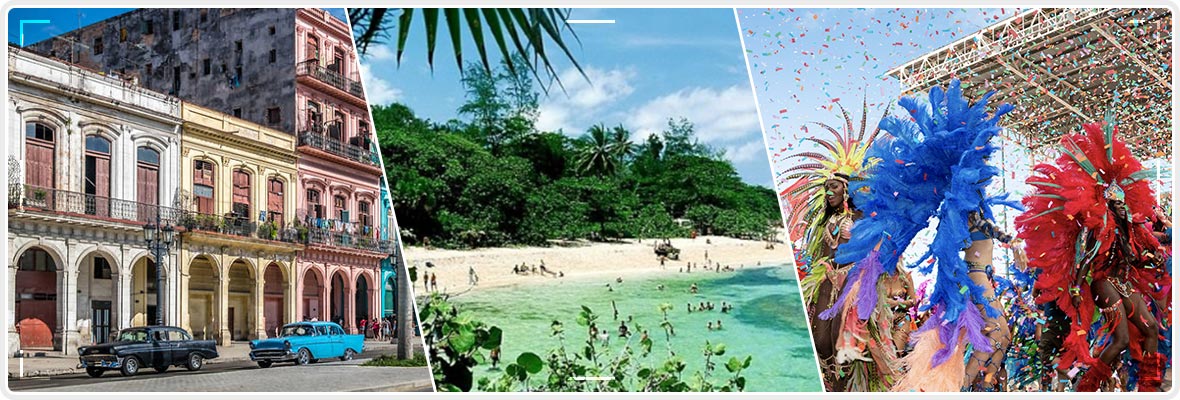When people think of Cuba, images of classic cars, vibrant salsa music, and sun-drenched beaches come to mind. While these iconic elements are part of the island’s allure, they only scratch the surface of what Cuba truly has to offer.
To experience the real Cuba, travelers need to step off the beaten path and explore the country’s hidden gems, beyond the well-trodden tourist areas. From remote villages to lesser-known nature reserves, here’s how you can uncover the authentic spirit of Cuba.
Table of Contents
1. Stay in a Casa Particular
One of the best ways to immerse yourself in Cuban culture is by staying in a casa particular — a private home that rents out rooms to visitors. More than just a place to sleep, these accommodations allow you to experience everyday Cuban life. You’ll share meals with your hosts, hear local stories, and gain insights into the realities of living on the island. Many casas are located outside the tourist hubs of Havana or Varadero, in smaller towns like Viñales, Trinidad, or Baracoa, where the rhythm of life is slower, and the experiences are richer.
Ask your hosts for recommendations on local spots to visit, and they might even take you around the area or introduce you to their friends and family, opening doors to genuine Cuban hospitality.
2. Explore Rural Cuba: Viñales and Beyond
Cuba’s countryside offers some of the most stunning landscapes in the Caribbean, and Viñales is the gateway to this rural beauty. Famous for its tobacco farms and the towering mogotes (limestone hills), Viñales provides an excellent opportunity to explore the real Cuban lifestyle. Here, farmers still cultivate crops by hand, and ox-drawn carts are a common sight.
Beyond Viñales, consider venturing into the Sierra del Escambray mountains or Pico Turquino National Park for hiking and nature trails that reveal Cuba’s untouched wilderness. You’ll encounter local wildlife, from the Cuban trogon (the national bird) to endemic tree frogs. These areas, free from the crowds of the resorts, allow you to connect with Cuba’s more natural side.
3. Visit Small Towns and Villages
Cuba’s charm extends far beyond Havana’s colonial architecture and Santiago’s historic plazas. Visiting smaller towns and villages allows you to see a quieter, yet equally captivating, side of the country.
Gibara, a small fishing village on the northern coast, offers a peaceful retreat with cobblestone streets and pastel-colored houses. Gibara is known for its annual film festival and has a bohemian vibe that attracts artists and filmmakers, but remains far from the usual tourist routes.
Remedios, another hidden gem, is one of the oldest settlements in Cuba and is famed for its Christmas parrandas — vibrant street festivals with music, dance, and fireworks. The town’s colonial square and churches, especially the Parroquia Mayor, offer a glimpse into Cuba’s rich history.
Visiting these towns provides an opportunity to interact with locals who are genuinely curious about travelers. It’s a chance to ask questions, listen to their stories, and understand Cuba’s unique history from a more personal perspective.
4. Seek Out Afro-Cuban Culture in Matanzas and Santiago de Cuba
While Havana often gets the spotlight for its music and nightlife, the cities of Matanzas and Santiago de Cuba are the heartlands of Afro-Cuban culture. In Matanzas, often called the “Athens of Cuba,” you can explore the roots of rumba and Afro-Cuban religions like Santería. Visiting this city provides a more in-depth understanding of Cuba’s African heritage, which plays a major role in the island’s cultural identity.
Santiago de Cuba, often considered Cuba’s most Caribbean city, is known for its vibrant street festivals, carnivals, and live music. It’s also home to the Casa de la Trova, where some of Cuba’s most legendary musicians have performed. Attending a live performance here, whether it’s son, bolero, or salsa, is an essential part of understanding the island’s musical soul.
5. Take Local Group Tours in Cuba
While some travelers shy away from group tours, in Cuba they can be an excellent way to delve deeper into the culture, especially when organized by local guides. Group tours in Cuba often go beyond the surface-level attractions, offering insightful historical perspectives and behind-the-scenes experiences.
For example, eco-tours led by local experts in the Zapata Swamp — a UNESCO Biosphere Reserve — allow visitors to explore the island’s rich biodiversity, while also learning about the conservation efforts that protect Cuba’s wildlife. Similarly, historical walking tours through cities like Cienfuegos or Camagüey provide a deep dive into the island’s complex colonial history, narrated by Cubans who lived through pivotal moments in the country’s past.
Joining a group tour can also be an opportunity to meet like-minded travelers who share an interest in experiencing the more authentic side of the island. Just be sure to look for tours led by Cuban operators to ensure that the experience stays true to the local culture.
6. Try the Local Cuisine
Food is an essential part of understanding any culture, and Cuba’s culinary traditions are no exception. While many travelers stick to the resort buffet or international restaurants, seeking out local spots will give you a taste of authentic Cuban flavors.
In rural areas, meals often consist of fresh, locally sourced ingredients, such as black beans, rice, plantains, pork, and seafood. In smaller towns, you might find paladares — privately owned restaurants — that serve up traditional dishes like ropa vieja (shredded beef) or lechón asado (roast pork) in a more intimate, family-style setting.
In places like Baracoa, on Cuba’s eastern tip, you’ll also find unique dishes influenced by indigenous Taíno culture, like bacán (a plantain and coconut dish) and calalú (a leafy green stew). Don’t be afraid to step into a humble, family-run restaurant and ask for the day’s special — you’re likely to get a home-cooked meal that reflects the soul of the region.
Final Thoughts
To experience the real Cuba, it’s important to travel with curiosity and an open mind. Beyond the tourist areas, you’ll find a country rich in history, culture, and natural beauty. Whether you’re hiking in Viñales, staying with a local family in a small town, or discovering Afro-Cuban rhythms in Santiago, these moments off the beaten path will give you a deeper understanding of Cuba’s complex and fascinating identity.
So, take a step away from the crowds and allow Cuba to reveal itself in ways most visitors never see.





